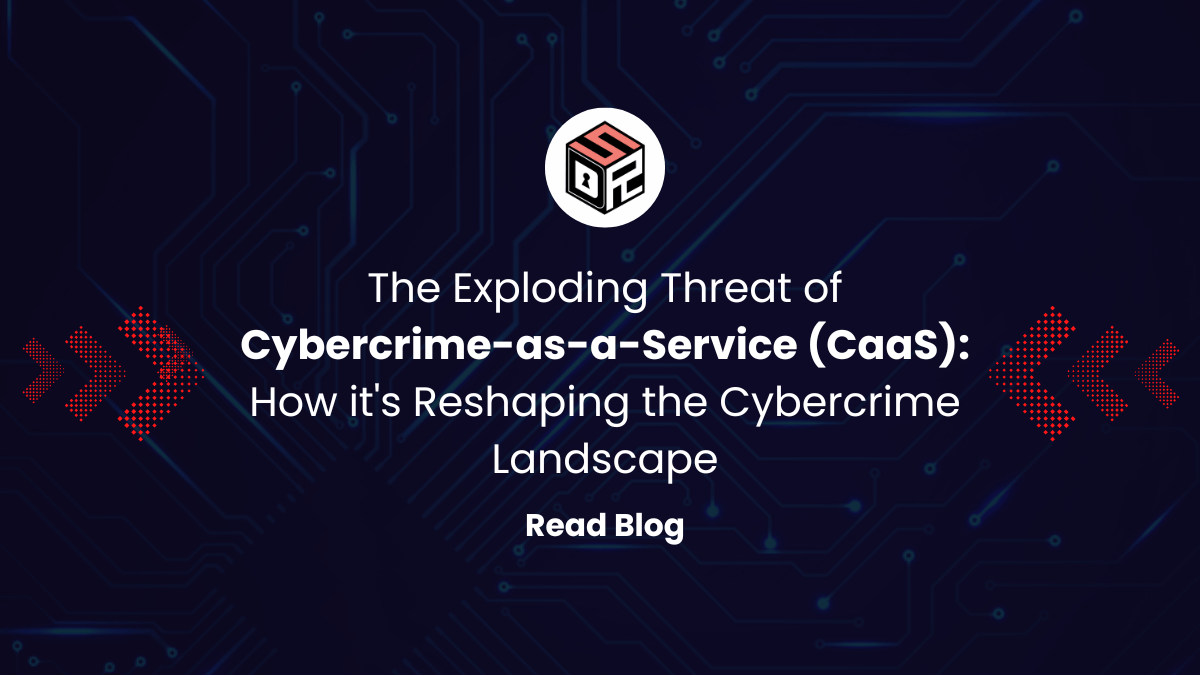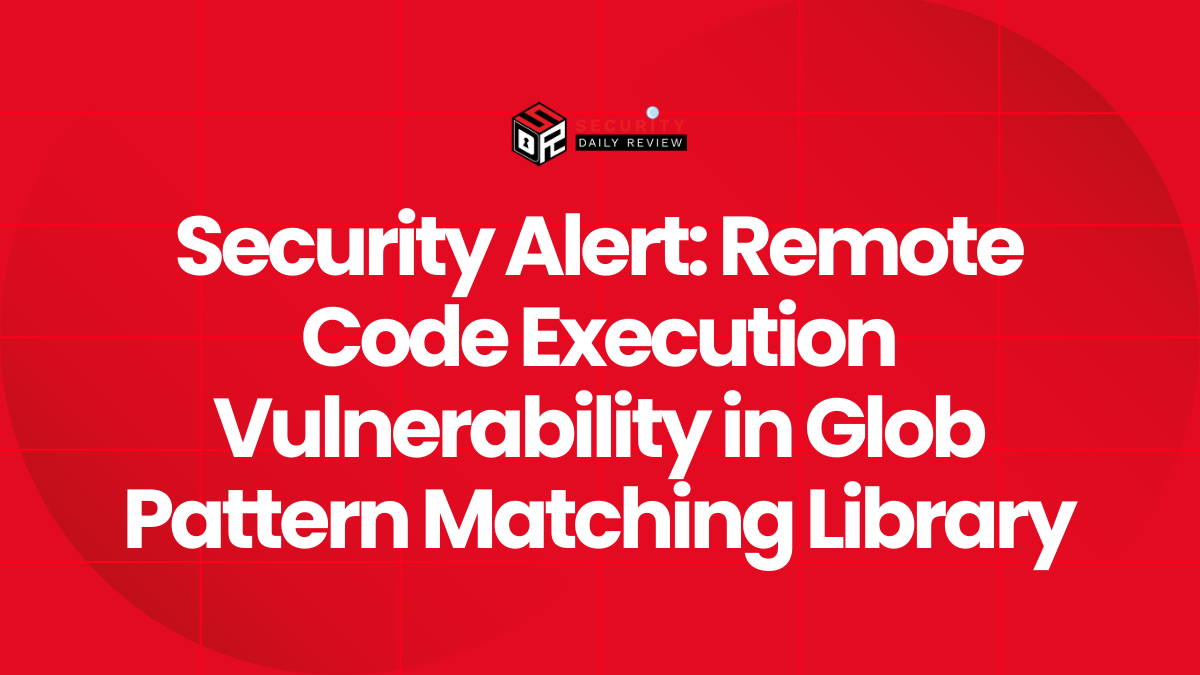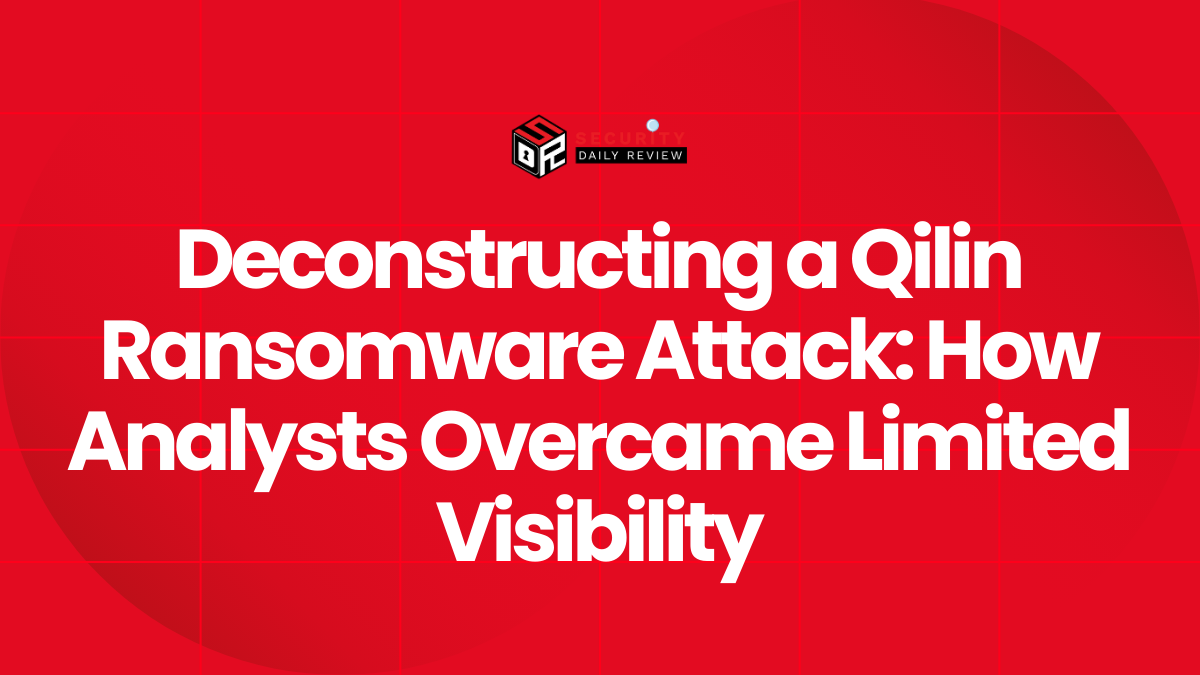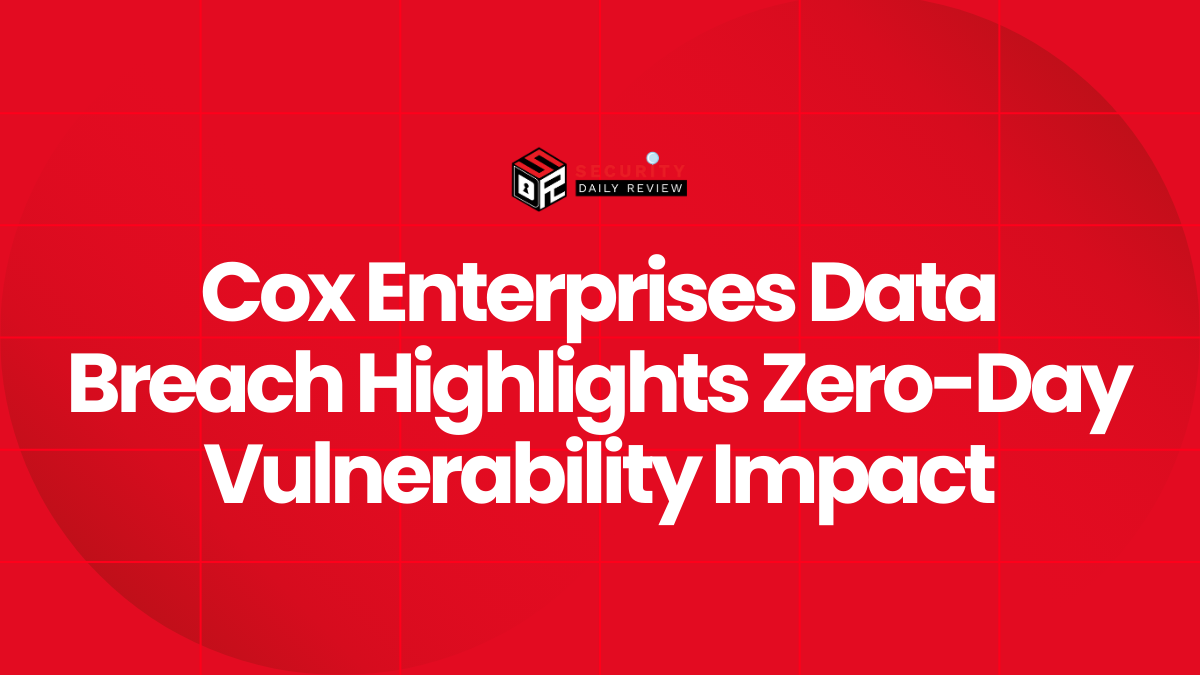How prepared is your business for a cyberattack that could disrupt operations, compromise sensitive data, and inflict lasting financial damage? For many organizations, the honest answer is: not very. One of the primary reasons is the rise of Cybercrime-as-a-Service (CaaS)—a rapidly growing underground economy that’s fundamentally changing how cybercriminals operate. Unlike the lone hackers of the past, today’s cybercriminals can rent or purchase ready-made tools and services, lowering the barrier to entry and increasing the frequency and scale of attacks.
The economic impact is staggering. Cybersecurity Ventures estimates the global cost of cybercrime will reach $10.5 trillion annually by 2025. This isn’t a distant, hypothetical scenario—it’s a real and immediate threat. To effectively defend against it, organizations must first understand the CaaS ecosystem and how it enables a new generation of cyber threats.
The Growing Threat of Cybercrime-as-a-Service (CaaS)
CaaS operates on a subscription model, much like legitimate software-as-a-service (SaaS) platforms. This means that even individuals with limited technical expertise can now unleash sophisticated attacks, including ransomware, phishing, and DDoS attacks.
The ease of access is amplified by the use of cryptocurrency, ensuring anonymity and making it harder to track perpetrators. This democratization of cybercrime is dramatically increasing the volume and variety of attacks, making it harder for businesses to defend themselves with traditional security measures.
Cybersecurity Ventures report highlights that in 2021, cybercrime inflicted $6 trillion in damages globally—enough to make it the world’s third-largest economy.
“This figure is expected to grow by 15% annually, reaching $10.5 trillion in damages globally in 2025. This represents the greatest transfer of economic wealth in history, surpassing the damage from natural disasters and the combined profits of all major illegal drug trades.”
Understanding the Cybercrime-as-a-Service (CaaS) Ecosystem
The cybercrime-as-a-service (CaaS) ecosystem functions like a digital black market, offering a range of malicious services to individuals with varying levels of technical expertise. This “democratization” of cyberattacks significantly lowers the barrier to entry for would-be criminals. Instead of requiring extensive coding skills and infrastructure, aspiring attackers can purchase ready-made tools and services, often through subscription models, using cryptocurrency to maintain anonymity.
The ecosystem comprises several key players:
- Vendors (Threat Actors): These are the creators and providers of the malicious services. They specialize in developing and offering various attack capabilities, such as ransomware, phishing kits, DDoS botnets, and exploit kits. Some vendors offer “off-the-shelf” solutions requiring minimal technical knowledge from the buyer, while others provide customized attacks tailored to specific targets. Their operations span various online platforms, including dark web marketplaces, invite-only forums, and even more accessible channels like Telegram.
- Affiliates/Customers: These are the individuals or groups who purchase the services offered by the vendors. They range from those with limited technical skills to more experienced hackers looking to leverage readily available tools to enhance their attacks. The ease of access allows even unskilled individuals to launch sophisticated attacks, significantly increasing the volume and frequency of cybercrime.
- Payment Processors: Cryptocurrencies, primarily Bitcoin, are the preferred payment method within the CaaS ecosystem due to their enhanced anonymity and difficulty in tracing transactions. This makes it challenging for law enforcement to track payments and identify those involved in the transactions.
CaaS encompasses a range of services, each designed to facilitate different types of attacks. Here are some of the most prevalent models:
- Ransomware-as-a-Service (RaaS): This is arguably the most lucrative and widely used CaaS model. RaaS providers develop and distribute ransomware kits, complete with tools for gaining access, maintaining persistence, and encrypting data. Affiliates subscribe to these services, often paying a commission on the ransom they collect. The ease of use has led to an explosion in ransomware attacks, with Cybersecurity Ventures predicting an attack on businesses every 11 seconds.
- Malware-as-a-Service (MaaS): RaaS falls under the broader umbrella of MaaS, which provides access to a wider range of malicious software, including trojans, viruses, worms, and spyware. Some MaaS services offer “off-the-shelf” malware, while others provide custom solutions tailored to specific targets.
- Phishing-as-a-Service: Phishing remains a highly effective attack vector, and CaaS providers offer comprehensive kits to facilitate these attacks. These kits typically include email templates, fake website designs, and dynamically generated malicious URLs. The ease of creating convincing phishing campaigns makes this a particularly dangerous threat.
- DDoS-as-a-Service: Distributed Denial-of-Service (DDoS) attacks overwhelm target systems with traffic, rendering them inaccessible. CaaS providers offer access to botnets, allowing even unskilled individuals to launch these attacks for a relatively low cost.
Cybercrime’s Economic Impact: A Looming Crisis
The Cybersecurity Ventures report paints an alarming picture of the rapidly escalating cost of cybercrime, projecting a future where the financial damage inflicted dwarfs even the most catastrophic natural disasters.
Their projections are not merely alarming; they represent a looming economic crisis of unprecedented scale. In 2021 alone, it is predicted that cybercrime will inflict a staggering $6 trillion in damages globally. This staggering figure is so substantial that, if measured as a national economy, cybercrime would rank as the world’s third-largest, surpassed only by the United States and China.
But the crisis doesn’t stop there. The annual cost of cybercrime will reach a breathtaking $10.5 trillion in 2025. This represents a consistent 15% year-over-year growth, a relentless climb that shows no signs of slowing.
This isn’t simply a financial concern; it represents the greatest transfer of economic wealth in history, jeopardizing innovation, investment, and global economic stability.
The U.S.: A Prime Target in the Cybercrime Crosshairs
United States’ is in a particularly vulnerable position in the face of this growing cybercrime wave. As the world’s largest economy, representing a quarter of the global GDP according to Nasdaq data, the U.S. presents an exceptionally lucrative target for cybercriminals. This economic significance translates directly into a higher risk of substantial financial losses from cyberattacks.
An FBI supervisory special agent stated that every American should assume their personally identifiable information has already been stolen and is circulating on the dark web.
The dark web is a vast and intentionally hidden part of the internet estimated to be 5,000 times larger than the surface web. It serves as a central marketplace for cybercriminals, facilitating the buying and selling of malware, exploit kits, and various cyberattack services. These tools are readily available for use against businesses, government agencies, utilities, and essential service providers within the U.S., posing a significant threat to national security and economic stability.
This echoes the warnings presented in Ted Koppel’s book, Lights Out: A Cyberattack, A Nation Unprepared, Surviving the Aftermath, which emphasizes the very real possibility of a crippling attack on the US’ National Grid and the alarming lack of preparedness within the U.S.
The exceptionally low likelihood of detection and prosecution of cybercrime in the U.S. (estimated at just 0.05% according to the World Economic Forum’s 2020 Global Risk Report) further exacerbates the situation. This further encourages cybercriminals and creates a climate of impunity. The U.S. is not just a target; it’s a prime target, and the consequences of inaction could be catastrophic.
Ransomware: The Go-To Attack Method for Cybercriminals
Far from a niche threat, ransomware has become the “go-to method of attack” for cybercriminals worldwide, reflecting its effectiveness and profitability.
The report details a shocking trajectory of escalating damages, illustrating the exponential growth of ransomware attacks. In just two years, from 2015 to 2017, damages surged from a relatively modest 325 million to a staggering 5 billion—a fifteenfold increase. This alarming trend continued, with estimated damages reaching 8 billion in 2018 and 11.5 billion in 2019.
The report projects that global ransomware damage costs will reach $20 billion by 2021, a mind-boggling 57 times higher than in 2015. This isn’t just a matter of financial losses; it represents a systemic threat to businesses and critical infrastructure.
The FBI’s particular concern regarding ransomware attacks targeting healthcare providers, hospitals, 911 services, and first responders highlights the potential for devastating real-world consequences.
These attacks not only disrupt essential services but can directly impact public safety and even result in loss of life, as tragically illustrated by the first reported ransomware-related death in Germany, where a hospital’s IT systems were crippled, leading to the death of a patient who could not receive timely treatment.
The speed and scale of ransomware’s growth, coupled with its potential to cause significant harm, make it a critical focus in the fight against cybercrime. The report suggests that the severity of ransomware attacks will ultimately force senior executives to take the cyber threat more seriously, although it expresses hope that this realization won’t come at the cost of further tragedy.
The Expanding Cyber Attack Surface: A Growing Target for Criminals
The world will store a staggering 200 zettabytes of data by 2025, encompassing data stored across private and public IT infrastructures, utility systems, cloud data centers, personal devices (PCs, laptops, tablets, and smartphones), and the ever-proliferating Internet of Things (IoT) devices. This massive amount of data represents a treasure trove for cybercriminals, and the cloud storage alone is projected to account for a significant portion of this total, reaching 100 zettabytes by 2025.
The shift to remote work, accelerated by the COVID-19 pandemic, has further expanded this attack surface. With nearly half the U.S. labor force working remotely, according to Stanford University, employees are generating, accessing, and sharing more data remotely through cloud applications, creating numerous security blind spots.
This trend is compounded by the continuous growth of internet users, with approximately one million new users joining daily. The report projects 6 billion internet users interacting with data in 2022, rising to over 7.5 billion by 2030. This massive increase in connected individuals and devices creates a vastly larger target for cyberattacks.
The nature of cyber threats has also evolved, expanding beyond traditional targets like computers and networks to encompass a wide range of interconnected systems. The report highlights the vulnerability of cars, railways, planes, power grids, and virtually anything with an electronic pulse, many of which are connected to corporate networks.
The sheer number of networked devices is predicted to surpass the number of humans on Earth threefold by 2023, according to Cisco, with trillions of networked sensors embedded in the world around us by 2022, and this number is projected to reach 45 trillion in just two decades. This dramatic increase in interconnected devices, coupled with the exponential growth of data, creates a vastly expanded and increasingly complex attack surface, demanding innovative and proactive cybersecurity strategies to mitigate the ever-growing risks.
Small Businesses: A Particularly Vulnerable Target
While large corporations often command significant resources to combat cyber threats, small-to-midsized businesses (SMBs) are frequently ill-equipped to handle the escalating risks, making them prime targets for cybercriminals. More than half of all cyberattacks are directed at SMBs, a stark statistic that underscores their vulnerability. The consequences are particularly dire: a staggering 60% of SMBs that fall victim to a data breach or hack go out of business within six months. This isn’t just a matter of financial loss; it’s a matter of survival.
Many SMBs lack the financial resources to invest in robust cybersecurity infrastructure and expertise. They often lack dedicated IT staff and the budget for sophisticated security software and services. This lack of resources is compounded by a lack of knowledge and awareness.
“Small and medium sized businesses lack the financial resources and skill set to combat the emerging cyber threat,” says Scott E. Augenbaum, former supervisory special agent at the FBI’s Cyber Division, Cyber Crime Fraud Unit
A Better Business Bureau survey found that for small businesses—which constitute more than 97% of all businesses in North America—the primary challenge in developing a cybersecurity plan is a lack of resources or knowledge. This knowledge gap leaves them particularly susceptible to common attacks like phishing scams and malware infections.
AI: A Necessary Defense in the Cyberwar
The sheer volume and sophistication of modern cyberattacks have outpaced the capabilities of traditional security measures, making AI a necessary component of any effective defense strategy.
AI’s ability to process vast amounts of data and identify patterns far surpasses human capabilities, enabling it to detect and respond to threats far more quickly and efficiently than human analysts.
AI-powered security systems can analyze network traffic, identify malicious activity, and automatically block or mitigate threats in real time. This proactive approach is crucial in the face of rapidly evolving attacks, allowing organizations to stay ahead of the curve and minimize the impact of breaches.
Furthermore, AI can enhance threat intelligence, providing valuable insights into emerging attack vectors and helping organizations to proactively strengthen their defenses. By analyzing data from various sources, AI can identify vulnerabilities and predict potential attacks, allowing organizations to address them before they can be exploited.
AI has the potential to improve the efficiency and effectiveness of human analysts. AI can automate many tedious and time-consuming tasks, freeing up human analysts to focus on more complex and strategic issues. This collaboration between AI and human expertise is crucial for building a comprehensive and robust cybersecurity posture.
But while AI is not a silver bullet, it is a critical tool in the fight against cybercrime, offering a much-needed advantage in the ongoing battle to protect data and systems from increasingly sophisticated attacks. The integration of AI into cybersecurity strategies is no longer a luxury; it’s a necessity for survival in the digital age.
The Solution: Managed Detection and Response (MDR)
The escalating threat of CaaS requires a proactive and sophisticated approach to cybersecurity. Reactive measures like antivirus software are simply not enough. The solution lies in Managed Detection and Response (MDR).
MDR combines advanced technology with human expertise to provide continuous monitoring, threat detection, incident response, and proactive defense. This approach addresses the limitations of traditional security measures by providing:
- 24/7 Monitoring: Constant vigilance against emerging threats.
- Proactive Threat Hunting: Actively searching for threats before they can cause damage.
- Rapid Incident Response: Swift action to contain and mitigate attacks.
- Expert Analysis: Sophisticated threat analysis and remediation strategies.
Field Effect MDR, for example, offers comprehensive coverage across endpoints, networks, and cloud services, providing a robust defense against the diverse range of CaaS attacks.
A Call to Action: Protecting Your Business
The threat of CaaS is real and present. Ignoring this threat is not an option. Businesses of all sizes must take proactive steps to protect themselves. This includes:
The threat of cyberattacks, including those leveraging Containers-as-a-Service (CaaS), is real and ever-present. Ignoring this threat is not an option. Businesses of all sizes must take proactive steps to protect themselves. This includes:
1. Investing in Robust Cybersecurity Solutions: Basic antivirus software is insufficient. Consider implementing Managed Detection and Response (MDR) solutions, which offer continuous monitoring, proactive threat hunting, automated threat detection, and rapid incident response capabilities. This proactive approach significantly reduces the impact of successful attacks. Furthermore, explore advanced threat protection technologies such as endpoint detection and response (EDR) and security information and event management (SIEM) systems to gain comprehensive visibility into your IT environment.
2. Educating Employees: Phishing remains a highly effective attack vector. Comprehensive security awareness training is crucial. Employees should be educated on recognizing and avoiding phishing attempts, understanding social engineering tactics, and adhering to safe browsing and password management practices. Regular simulated phishing campaigns can help assess and improve employee awareness.
3. Developing a Comprehensive Cybersecurity Plan: This plan should be more than a document; it should be a living, breathing strategy. It must outline procedures for responding to various types of cyberattacks, including ransomware, data breaches, and supply chain attacks. The plan should detail roles and responsibilities, communication protocols, incident response procedures, and recovery strategies. Regular testing and updates are essential to ensure its effectiveness.
4. Regularly Updating Software and Systems: Keeping software and operating systems up-to-date is crucial to patching vulnerabilities that cybercriminals actively exploit. Implement automated patching processes where possible to minimize the window of vulnerability. Regular vulnerability scanning and penetration testing should also be incorporated to identify and address weaknesses before attackers can exploit them.
5. Implementing Multi-Factor Authentication (MFA): MFA adds a significant layer of security to accounts, making them substantially harder to compromise, even if credentials are stolen. Enforce MFA for all critical systems and accounts, including cloud services, email, and remote access.
6. Backing Up Data Regularly: This is not just about data recovery; it’s about business continuity. Regular backups are essential to ensure data can be restored in the event of a ransomware attack or other data loss event. This should include:
- Immutable Backups: Backups that cannot be altered or deleted after creation, preventing ransomware from encrypting or destroying your recovery data.
- Air-Gapped Backups: Backups stored offline and physically disconnected from the network, providing an additional layer of protection against ransomware and other cyber threats. These backups should be regularly rotated and stored securely in a separate, physically secure location.
- 3-2-1 Backup Strategy: Maintain at least three copies of your data, on two different media types, with one copy stored offsite. This strategy ensures redundancy and resilience against data loss.
By implementing these measures, businesses can significantly reduce their risk of falling victim to cyberattacks and improve their overall cybersecurity posture. Remember that cybersecurity is an ongoing process, requiring continuous monitoring, adaptation, and improvement.
The cost of inaction far outweighs the cost of investing in robust cybersecurity measures. The potential financial losses, reputational damage, and even physical harm caused by CaaS attacks make proactive security a business imperative.
Don’t wait until it’s too late. Take action today to protect your business from the ever-growing threat of Cybercrime-as-a-Service.
Frequently Asked Questions (FAQs)
- What is Cybercrime-as-a-Service (CaaS)?
- CaaS is a business model where cyberattack capabilities are offered as a service, often on a subscription basis, making sophisticated attacks accessible to individuals with limited technical skills.
- How does CaaS impact businesses?
- CaaS increases the frequency and diversity of cyberattacks, targeting businesses of all sizes, leading to significant financial losses, reputational damage, and operational disruptions.
- What are the different types of CaaS?
- Common types include Ransomware-as-a-Service (RaaS), Malware-as-a-Service (MaaS), Phishing-as-a-Service, and DDoS-as-a-Service.
- How can I protect my business from CaaS attacks?
- Implement robust cybersecurity solutions like MDR, educate employees, develop a comprehensive cybersecurity plan, regularly update software, and utilize multi-factor authentication. Data backups are also critical.









